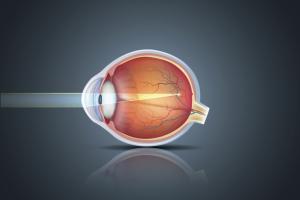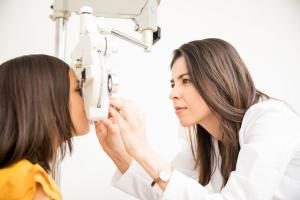
Recent survey results indicate the need for intentional, continuous education in the examination room.1 More ophthalmologists are actively engaged in myopia management and prescribing MiSight® 1 day* contact lenses for their age-appropriate patients.2
By Dr. Rupa Wong, MD
Myopia is a significant public health concern with cases rising across the globe.1 As clinicians, we’ve seen the statistics, which should give us pause. Currently, it’s estimated that about 30% of the world’s population has myopia, and by the year 2050, that number is expected to grow to 50%.3
A few studies have indicated that early parental awareness of their child’s vision is linked to a decreased risk in childhood myopia, however, there’s little information available in the literature that sheds light on parents’ awareness of and reception to myopia control strategies and treatments.4
To gain a greater understanding in this area, I recently surveyed parents with myopia who follow me on social media and have children under 18 about their perceptions of myopia and current treatment options. Based on the results, our study found that, during the time of their child’s visit, almost half of parents were unaware of myopia treatments currently available for their child.1
As a comparison, a separate Harris poll of parents and eye care professionals (ECPs) conducted four years ago found only 33% of parents were familiar with the term “myopia” or how it could affect their child’s future vision.5 In other words, myopia awareness appears to be growing at a modest pace, but there is still much work to be done.
Here are some other findings of my survey1:
• Not surprisingly, parents with myopia that was greater than -6.00D were more inclined to be worried or extremely worried about their child’s myopia.
• Although 56% of parents believed their child’s myopia had worsened over the past year, 49% had never heard of myopia before.
• The top three factors that motivated parents to seek early treatment for their child included rapid progression; threat to their child’s overall well-being; and FDA approved treatment with long-term data.
• Of interest, cost did not rise to the top as a treatment barrier for parents. Insurance coverage ranked fourth as a motivating factor to seek earlier treatment, and overall financial cost ranked last for parental justification for not saying yes to myopia intervention.
Read the rest of the article on CooperVision.com.
Dr. Rupa Wong is a board-certified pediatric ophthalmologist and the managing partner of Honolulu Eye Clinic. She also serves as Clinical Associate Professor at University of Hawaii School of Medicine.
*Indications for Use: MiSight® (omafilcon A) daily wear single use Soft Contact Lenses are indicated for the correction of myopic ametropia and for slowing the progression of myopia in children with non-diseased eyes, who at the initiation of treatment are 8-12 years of age and have a refraction of -0.75 to -4.00 diopters (spherical equivalent) with ≤ 0.75 diopters of astigmatism. The lens is to be discarded after each removal.
1. Luo EL, Wong R. Parental Attitudes Toward Myopia Management. AAPOS 2023 Meeting Poster.
2. AAPOS Myopia Survey. Data on File.
3. Sankaridurg P, Tahhan N, Kandel H, et al. IMI Impact of Myopia. Invest Ophthalmol Vis Sci. 2021 Apr 28;62(5):2.
4. Zhou S, Yang L, Lu B, et al. Association between parents’ attitudes and behaviors toward children’s visual care and myopia risk in school-aged children. Medicine (Baltimore). 2017 Dec; 96(52): e9270.
5. CooperVision data on file 2019. Myopia Awareness, The Harris Poll online survey 6/27/19 to 7/18/19 of n=1,005 parents (with child age 8-15) in U.S. Number increases to 48% or 52% if parent or child respectively had myopia.








